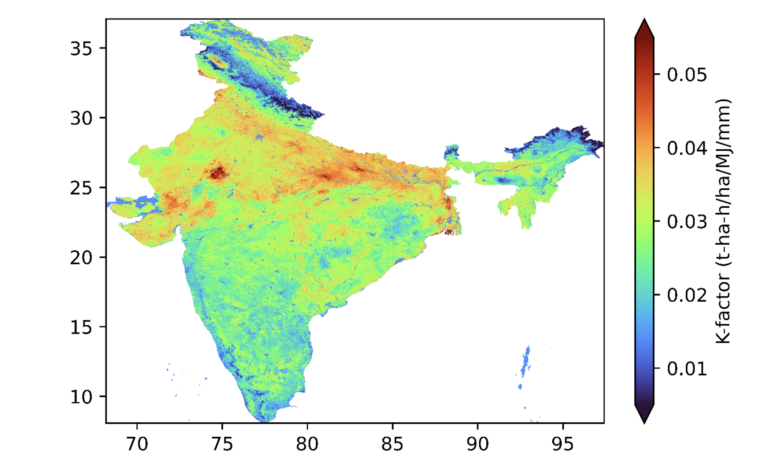IIT Delhi Researchers Unveil First National-Scale Mapping of Soil Erodibility

New Delhi: Soil erosion, a critical environmental issue, often triggered by rainfall and runoff, has been a growing concern in India. Understanding soil erodibility, the susceptibility of soil to erosion, has been essential for land conservation efforts. In a pioneering effort, researchers at the Indian Institute of Technology (IIT) Delhi have introduced the country’s first national-scale mapping of soil erodibility, filling a crucial gap in soil conservation.
Soil erodibility depends on various factors, including rainfall, infiltration, runoff, soil structure, texture, permeability, and organic matter content. While previous assessments were confined to specific regions or catchments, this national-scale mapping provides a broader perspective, highlighting areas most vulnerable to soil erosion.
The study revealed that out of the 50 districts with the highest erodible soil, 29 are in Uttar Pradesh, 13 in Bihar, 3 in Gujarat, 2 each in Haryana and Rajasthan, and 1 in Punjab. This underscores the combined impact of factors such as rainfall, runoff, land use, land cover, deforestation, and agricultural practices on soil erosion.
Professor Manabendra Saharia, from the Department of Civil Engineering at IIT Delhi, stated, “Soil erosion is a significant trigger for land degradation and a major global geo-environmental issue. Being able to assess its causes and impacts at a high-resolution will help us develop a national soil conservation plan that can support our vital agricultural sector.”
The research was conducted by Mr. Ravi Raj (PhD Scholar), Prof. Manabendra Saharia, and Prof. Sumedha Chakma from the Hydrosense Lab, Department of Civil Engineering at IIT Delhi. Their findings, exploring the spatial variation of soil erodibility and its relationship with soil properties in India, were published in the journal CATENA.
The dataset, named the Indian Soil Erodibility Dataset (ISED), has been made freely available with a spatial resolution of 250 meters, enabling researchers and policymakers to access valuable information for land conservation efforts.
The study estimated the national average soil erodibility factors for India using two models, Nomograph and EPIC, resulting in values of 0.028 and 0.034 t-ha-h/ha/MJ/mm, respectively. The research identified histosols soil type as the least susceptible to erosion, with the lowest average K-factor, while xerosols soil type was found to be the most susceptible.
Additionally, the researchers conducted a comprehensive statistical analysis of the soil erodibility map, revealing correlations with different soil types, textures, and erodibility values. The study’s insights are expected to play a pivotal role in soil loss estimations and land conservation efforts at the national level.




